Everyone’s retrospective at present, and Linden Lab’s CEO is no different. Read his thoughts here.
A number of Second Life presences are listed as highlights by M Linden – what would you add to the list?
Tech -- Culture -- Humour
Everyone’s retrospective at present, and Linden Lab’s CEO is no different. Read his thoughts here.
A number of Second Life presences are listed as highlights by M Linden – what would you add to the list?
Over on DIP’s Dispatches from the Information Age, SL resident Eureka Dejavu has posted some pics of a protest held over recent days. The focus of the protest is the current flare up of hostilities between Hamas and Israeli defence forces. Specifically, the protest is against the current Israeli actions in the Gaza strip. This has caused some angst in some quarters, with accusations of one-sideness.

Although I deplore in the extreme Hamas’ actions to date, I’d be surprised if the protesters were there primarily to support Hamas. Isn’t the distress focused primarily on the loss of innocent human lives in the midst of it all?
Yes, Hamas use appalling tactics of placing themselves in civilian areas, but that doesn’t negate the right of those concerned for those civilians to be outraged at their death? As Eureka summarises in her post, that’s exactly the perspective encouraged at the protest.
For mine, this view expressed in the post says it all:
The gathering is an example of the rich, textured opportunity that 3D immersive spaces like Second Life offer for people to express their concerns about present day issues
Click here for the full photo set (from which the above picutre comes) and judge for yourself. As always, comments are welcome – was this a one-sided protest, a rightful platform to express sorrow at current events, or both?
Look for Part 1 of our roundup here. Onto the second half of 2008:
July 2008
– The first issue of the Journal of Virtual Worlds Research launched
– We started a two-part series looking at virtual world addiction
– The first successful teleport between the Second life grid and an OpenSim grid was announced
– Google Lively was announced
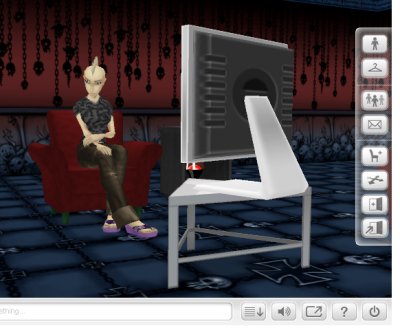
– New Linden Lab CEO Mark Kingdon gave a report on his first two months
– We discussed the concept of Second Life as a frontier product
– Sister site, Metaverse Health, launched.
August 2008
– Sex in Google’s Lively got the Second Life Herald treatment
– Second Life on the iPhone and iPod Touch became a reality (sort of)
– A Saddle Club virtual world continued development
– A Second Life musician received a real-world recording deal
– We profiled AUGrid founder Nathan Organ
– An Australian honours student conducted research on journalism and Second Life
– Students vs Second Life generated some excellent discussion in the blogosphere
– The Melbourne Laneways presence on ABC Island in Second Life bit the dust
– Debate ensued on an article on the Sydney Morning Herald claiming Second Life is on the wane for Australians. The PhD student quoted in the article, Kim MacKenzie, rightly hit back on the coverage.
September 2008
– VastPark released its Immersion Player
– Health facilities continue to explore virtual world with gusto
– Twinity moved to public beta
– Openlife’s momentum continued to build

– Second Life is my wheelchair covered accessibility issues and virtual worlds
– The WA Police entered Second Life as a recruitment strategy, with some controversy ensuing
– We criticised Linden Lab’s growing secrecy
October 2008
– Gender Freedom Day was celebrated in Second Life
– Cranial Tap’s business services were given the once over
– We launched our new HQ in Second Life
– Australian accountants got into Second Life
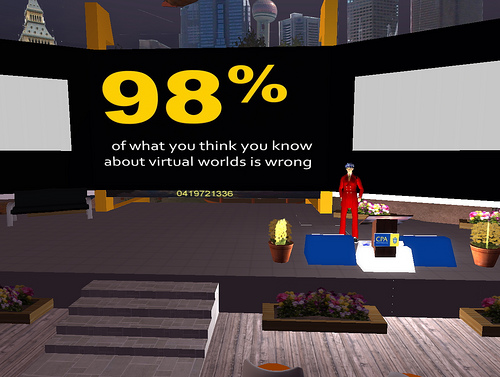
– Another quality Australian installation opened – Foul Whisperings, Strange Matters
– World of Warcraft demographics proved some stereotypes and disproved some others
– Linden Lab announced price rises, with some backlash ensuing
– We touted the Nintendo Wii as one of the most successful virtual world platforms
November 2008
– Metaplace’s beta gets a detailed overview and comes up looking good
– Casual gaming world in development, Gatheryn, provided some information on its progress
– Furries were again the discussion point in the context of stereotypes

– Virtual sex and real-world divorce captured the attention of mainstream media worldwide, with increased Second Life usage the result
– Google Lively breathed its last after a mere five months of existence
– The Australian Virtual Worlds Workshop was held successfully in Melbourne and in Second Life, including a disclosure that Second Life standalone servers are on the way
December 2008
– Twinity’s momentum continued, even though it remains in beta
– The open-mindedness of individuals in virtual worlds was questioned
– The Australian government’s internet filtering proposals were discussed for their potential significant impact on virtual worlds
– The opportunities presented by teaching health-care virtually continue to grow

– Lee Hopkins, Australian business communicator and PhD student, is profiled
– Guest poster, Seshat Czeret, talks of her experiences with disability and Second Life
– Habbo Hotel’s Australian operation talked about the launch of an in-world currency
It’s that retrospective time of the year again – last year’s look back was a popular feature so here we go again:
January 2008
– Linden Lab issued a warning on currency trading scams
– community-driven politics related to the US presidential election was observed in World of Warcraft
– we made a personal comparison between Second Life and World of Warcraft
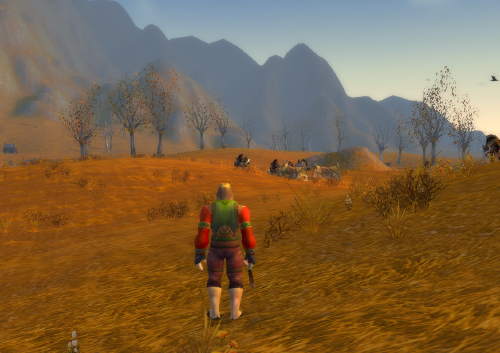
– Linden Lab made a significant intervention in regard to virtual banking
– Ten months out from the US presidential election, the satire was heating up in Second Life
– Second Life’s World Stock Exchange, run by Australian Luke Connell, was impacted by the banking ban
– The Australian Open made a return to Second Life
– The momentum towards beta built for Metaplace
– new Second Life resident and sometimes writer, Bix Ashbourne, wrote about the loss of his virtual world skepticism
– Australia Day was celebrated in style in Second Life
– A guest post from Wolfie Rankin on Furries, griefing and sexuality led to some of the years biggest traffic for a story.
February 2008
– We interviewed Australian singer and TV host in Second Life, Paisley Beebe
– The Linden Department of Public Works launched
– We hoped (in vain) for virtual worlds to feature in Kevin Rudd’s 2020 Summit
– We profiled the founder of Openlife, Steve Sima (Sakai Openlife)
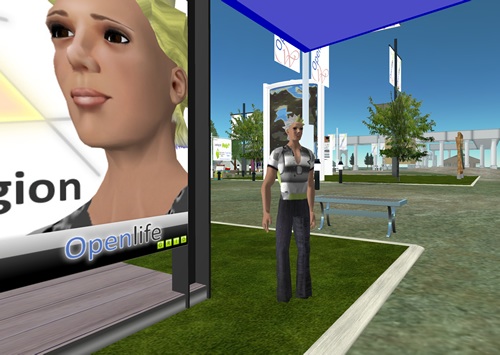
– We discussed text-to-speech with Cepstral CEO Craig Campbell
– Hello Kitty Online started to take shape
– The Enterprise 2.0 forum held at Luna Park, Sydney, showed that business was starting to get the virtual worlds picture
– Cisco opened a virtual hospital in Second Life
March 2008
– VastPark drew close to its open beta phase
– The Telstra Experience Centre launched in Second Life
– Linden Lab CEO Philip Rosedale stood aside
– We looked at ABC Island one year on in Second Life
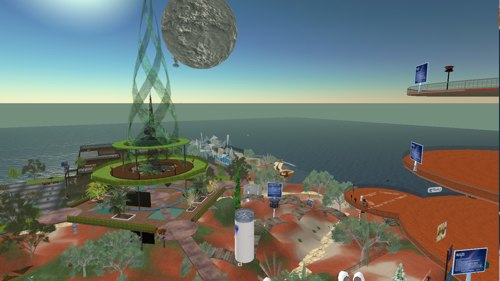
– A look at Telstra after a year in Second Life
– Episode 1 of The Metaverse Journal Podcast went live
– Linden Lab’s CEO testified before the US Congress
April 2008
– Linden Lab started their trademark clampdown
– Linden Lab struggled to deal with periods of high user concurrency
– An Australia Council funded art project, Babelswarm, launched in Second Life
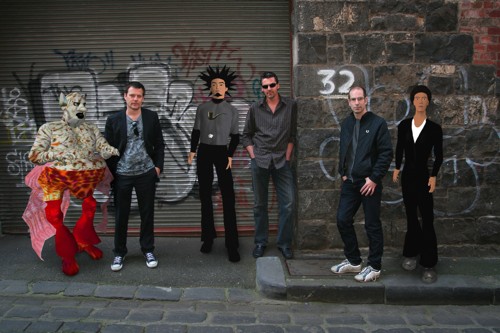
– We profiled Twinity’s co-founder, Dr Mirko Caspar
– Linden Lab gained a new CEO, Mark Kingdon
– A new Australian documentary on Second Life continued production for a 2009 release
May 2008
– The Sims Online ended its existence
– Personality conflicts caused some issues with the community driven ABC Island in Second Life
– We profiled Australian machinima producer, Skribe Forti

– Melbourne was the venue for a seminar on law and regulation of virtual worlds
– Some wondered whether a virtual recession would follow the real-world one in the United States.
June 2008
– More than 300 million people had registered to use virtual worlds
– David Rolston, CEO of virtual world provider Forterra, talks virtual worlds as training tool
– Barbie Girls virtual world adds a premium subscription option

– An Australian study finds that the stereotype of gamers as social rejects is false
– Second Life had its five-year anniversary and we summarised its achievements in that time
– New writer for The Metaverse Journal, Feldspar Epstein, had a further look at Australian educational institutions in Second Life
– Twinity went under the microscope to look at its usefulness in a growing virtual world market
Back in October 2007, this site started generating a positive cash flow. After covering all costs, the decision was made to put excess funds to good use. Kiva was chosen primarily for its brilliant model of helping people help themselves, but there was also the tie-in of Kiva having a Second Life presence.
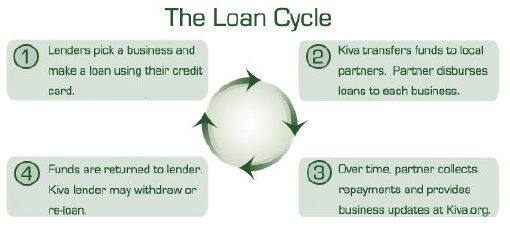
Since then, more than a dozen entrepreneurs in developing countries have been funded from our advertising revenue, but we’d love to see an even bigger impact from the virtual worlds community. In October this year we set up a Kiva team called Metaverse Aid and we’re now starting a campaign to build the team.
If you’d like to join the Metaverse Aid team on Kiva, sign up as a member, then join our team. When you make your first loan you’ll be able to select Metaverse Aid as the team you’re a part of. That’s it!
If you’re already a Kiva member, just click on the ‘Community’ button and search for Metaverse Aid.
Without some assistance, the people requesting micro-finance on Kiva will not likely have access to the opportunities that virtual worlds offer – here’s a chance to influence that.
Australian machinima producer and virtual worlds observer, Skribe Forti, has created a very interesting review of mirror world Twinity. It seems a balanced piece that covers both the strengths and weaknesses of Twinity, which is currently in beta:
What are your thoughts? Do you agree with Skribe’s summary of Twinity?
It’s with great pleasure we feature a guest post from Tateru Nino. We’ve profiled Tateru previously for good reason – there are few people who would understand Second Life more fully.
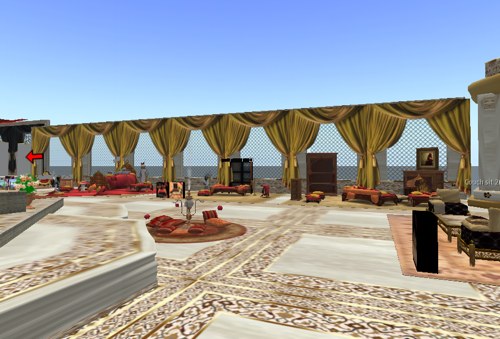
That’s a simple enough fact. Without communities, there can be no commerce. Even the simplest of communities suffices, but in the absence of it, you’re not going to make sales or effectively market your products.
In the offline, atomic world, communities are largely a matter of geography and infrastructure. Communities form because people are, willingly or unwillingly, in proximity. That’s why the corner store does alright. They’re right there, in your community, and they provide the sorts of things you want.
In the online world, however, matters of geography and mobility infrastructure are largely erased. Community becomes entirely a matter of choice. There’s no captive audience online. There are only interested audiences, and if you don’t have their interest, then someone or something else does.
So, we have two rules.
One, you need a community before you can attempt to sell. Two, you need to be providing something that community wants before they will buy.
Both rules are commonly ignored online, and in particular by businesses operating in virtual worlds.
There are basically only two ways to deal with rule one. Either you have to move into an established community, or you have to build one. The latter means you have to get people interested, and keep them interested. Even when they’re not paying you for product. That’s hard, and expensive and pays off big in the long run. It’s not a strategy for those who are into short-term gains or who are undercapitalised or undercommitted.
The alternative, of course, is to cuddle up with an established community. In the offline world, that’s newspaper advertising, billboards, sponsorship and so on. Online this is often done with banner-ads, but banner-advertisers tend to be quite a bit more scattershot. In the offline world, even a poorly-placed advertisement will be seen by many potentially interested people. In the online world, a poorly-placed advertisement may be seen by almost nobody who is interested.
A million impressions in the wrong place may be worth far, far less than a hundred impressions in the right place.
And that brings us to rule two. You’ve got to be selling something that the community wants, otherwise you may as well just be setting fire to your marketing budget. A kiosk promoting mobile phone plans isn’t going to work in a medieval role-playing environment or a historical recreation. It’s so out-of-place that you’ll get negative impressions, regardless of how many eyeballs and apparent engagement you’re deriving.
This is one of the few times that I actually counsel marketers to behave differently online than offline. You need to keep the same offline core fundamentals of marketing: Know your market, do your research, and refine your approach through empirical trials — but out in the virtual environments, you need to stop assuming you have a ready-made community. You’ll have to find an appropriate one, or make one — or go back to print ads and billboards.
A scientific expedition disembarks from its plane at the final outpost of civilization in the deepest Amazon rain forest.
They immediately notice the ceaseless thrumming of native drums. As they venture further into the bush, the drums never stop, day or night, for weeks. The lead scientist asks one of the natives about this, and the native’s only reply is “Drums good. Drums never stop. Very BAD if drums stop.”
The drumming continues, night and day, until one night, six weeks into the trip, when the jungle is suddenly silent. Immediately the natives run screaming from their huts, covering their ears.
The scientists grab one boy and demand “What is it? The drums have stopped!” The terror-stricken youth replies “Yes! Drums stop! VERY BAD!”
The scientists ask “Why? Why? What will happen?”
Wild-eyed, the boy responds, ” . . . BASS SOLO!!!”
Thanks to The Inquisitr, we know the answer:
You might not be able to get the big man himself — he’s pretty busy right now, after all — but dial 1-877-HI-NORAD (1-877-446-6723) and you can talk to a real person who’ll tell you where he is and what he’s up to. If you’re outside the United States, dial 1-719-556-5211 to call Santa instead.
By the time you read this the lines will have closed but keep it in mind for next year.
A Merry Xmas to all.
As announced on the official blog, the new design developed over recent weeks has gone live, initially for those not already registered as Second Life residents. The new version loaded for me this afternoon:
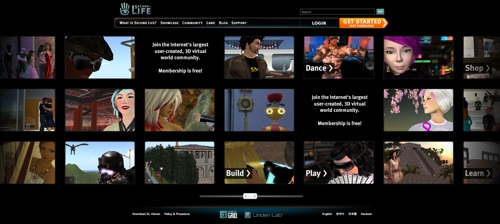
The re-design has attracted a lot of comment, a significant proportion of which has been criticism. For what it’s worth, I like the new design. Is it derivative? I believe so, but pretty much everything on the 2D web is. The new site does provide a real showcase of what Second Life has to offer, which must count for something. What are you thoughts – do you like it, hate it, or couldn’t care less?
Copyright © 2024 · Magazine Child Theme on Genesis Framework · WordPress · Log in
Recent Comments